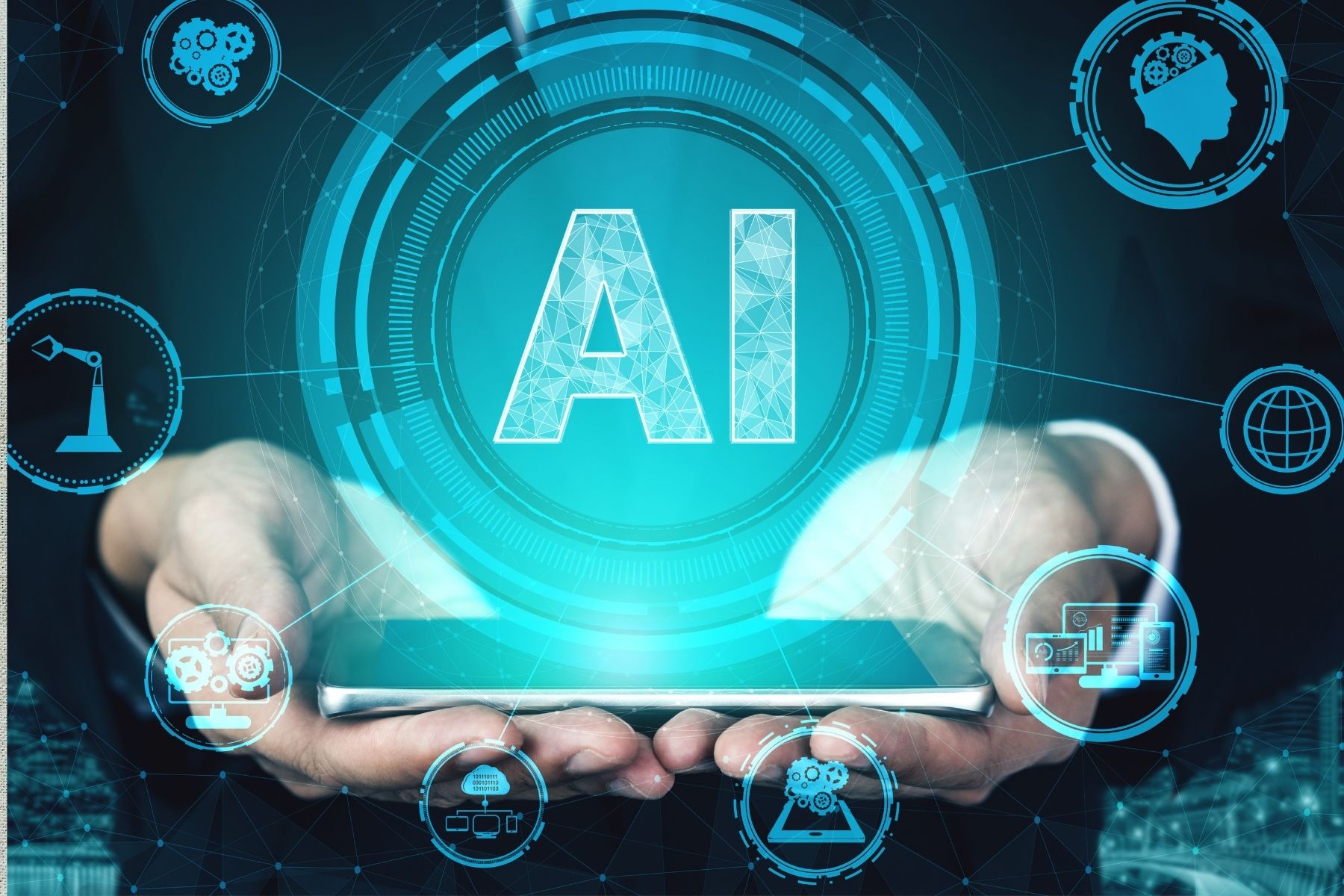Introduction
Education is an essential entitlement, and ensuring equitable opportunities for all students is crucial. The emergence of artificial intelligence (AI) technology, specifically edtech tools for teachers, has resulted in a significant revolution in education. These AI-powered tools empower students, bridge gaps, and provide access to educational resources.
This article will explore how AI enhances student accessibility through personalized learning, breaking language barriers, empowering students with disabilities, overcoming physical challenges, transforming assessments, and leveraging data-driven insights. Additionally, we will discuss the future of AI in education and its potential to advance accessibility and opportunities for students.
1. Revolutionizing Education: Empowering Students through AI-Powered Accessibility Tools
AI-powered accessibility tools have revolutionized education by empowering students to overcome barriers and unlock their full potential. These innovative tools utilize AI algorithms to provide personalized learning experiences tailored to individual needs.
Through adaptive assessments and interactive platforms, students can access educational resources, receive real-time feedback, and engage in immersive learning experiences. AI-powered tools also facilitate collaboration and foster inclusivity by promoting equal participation among students.
By revolutionizing education, AI-powered accessibility tools ensure that every student has the opportunity to thrive and succeed in their academic journey.
2. Bridging Gaps: Enhancing Inclusive Learning with AI Technology
AI technology has become a powerful tool in bridging gaps and promoting inclusive learning environments. AI can identify and address learning gaps through advanced algorithms, providing targeted interventions to support students’ needs.
AI-powered virtual assistants and chatbots offer real-time support, answering students’ questions and providing guidance outside the classroom.
Additionally, AI-enabled language interpretation and transcription services help overcome language barriers, facilitating communication and understanding among multilingual students.
By harnessing the capabilities of AI, educational institutions can promote inclusivity and ensure equal access to high-quality education.
3. Unleashing AI’s Potential: Enabling Student Accessibility in Education
AI has unleashed its potential to enable student accessibility by providing innovative solutions to address diverse learning needs. AI-powered tools offer adaptive learning experiences catering to students’ strengths, weaknesses, and learning styles.
These tools can dissect information continuously, giving customized suggestions and intercessions to help student progress. Moreover, AI improves availability for students with incapacities through assistive technologies like text-to-speech and speech recognition systems.
By harnessing artificial intelligence’s capacity, instructors can establish comprehensive learning environments enabling students to flourish and accomplish their academic goals.
4. Unlocking Access: How AI Tools Drive Student Accessibility and Inclusion
AI tools have become instrumental in unlocking access to education, ensuring students have equal opportunities to learn and succeed. Through AI-driven platforms and applications, educational resources are accessible to students regardless of their geographical location or socioeconomic background.
AI-powered adaptive technologies facilitate personalized learning pathways, allowing students to progress at their own pace. Moreover, AI algorithms can analyze big data to identify educational inequities and inform policy decisions promoting inclusivity.
By driving student accessibility and inclusion, AI tools are revolutionizing education and fostering a more equitable and diverse learning landscape.
5. Personalized Learning: The Impact of AI on Student Accessibility at Scale
Personalized learning, made possible through AI technology, has a profound impact on student accessibility at scale, such as:
- AI-powered tools enable personalized learning experiences for students on a large scale.
- Machine learning algorithms analyze student data to create customized learning pathways.
- Personalized learning enhances student accessibility by catering to individual needs and learning styles.
- Students can access educational resources tailored to their strengths, weaknesses, and preferences.
- AI tools provide real-time feedback and adaptive assessments to support student progress.
- Accessibility at scale ensures that students from diverse backgrounds and geographical locations can benefit from personalized learning.
- AI-powered platforms and applications break down barriers to education, promoting inclusivity and equal opportunities.
- The impact of AI on student accessibility at scale is a more tailored, engaging, and effective learning experience for all students.
6. Breaking Language Barriers: AI Tools for Multilingual Student Accessibility
Language barriers can impede students’ access to education, particularly for non-native speakers or from diverse linguistic backgrounds.
AI-powered translation tools and natural language processing algorithms facilitate seamless communication and comprehension for multilingual students.
These tools can instantly translate text, audio, and even written notes, ensuring language differences do not hinder students’ educational opportunities.
7. Empowering Students with Disabilities: AI’s Role in Inclusive Education
AI is crucial in empowering students with disabilities by providing assistive technologies and adaptive learning solutions. Through AI-driven tools, students with disabilities can overcome mobility, communication, and learning challenges.
For instance, AI-powered robotic assistants can assist students with physical disabilities, allowing them to participate fully in educational activities. AI-powered tools also offer benefits such as speech recognition software, which helps students with speech impairments communicate effectively.
Additionally, machine learning algorithms can analyze data from students with disabilities to identify patterns and provide tailored interventions.
By leveraging AI in inclusive education, we can empower students with disabilities to overcome obstacles and reach their full potential.
8. Overcoming Physical Challenges: Enhancing Student Mobility with AI Tools
For students with physical challenges or limited mobility, AI tools can provide invaluable support; these are:
- AI tools assist students with physical challenges or limited mobility in navigating educational environments.
- Robotics and AI-powered devices provide mobility support, helping students with tasks like turning pages and carrying books.
- AI tools enable students to manipulate objects in the classroom more independently.
- By enhancing student mobility, AI tools ensure physical challenges do not hinder educational opportunities.
- The use of AI in overcoming physical challenges promotes inclusivity and equal access to education
- AI tools empower students to participate fully in educational activities and interact with their peers.
- The impact of AI in enhancing student mobility is a more inclusive and enabling learning experience for students with physical challenges.
9. Transforming Assessments: Revolutionizing Student Evaluations with AI
Traditional assessments often have limitations in capturing the full range of a student’s abilities and potential. However, AI technology revolutionizes student evaluations by providing adaptive and personalized reviews.
AI algorithms can analyze student responses, identify areas of strengths and weaknesses, and tailor subsequent questions accordingly. This adaptive assessment approach provides more accurate and comprehensive evaluations, reduces biases, and ensures fair student evaluations.
10. Real-Time Support: Enhancing Student Accessibility through AI-Powered Tutoring
AI-powered tutoring systems offer real-time support and guidance to students, further enhancing accessibility. These systems utilize natural language processing and machine learning to understand student queries and provide personalized explanations and feedback.
Students can receive immediate assistance, access additional resources, and engage in interactive learning experiences. AI-powered tutoring bridges the gap between classroom instruction and individualized support, fostering greater accessibility for all students.
11. The Future of AI in Education: Advancing Accessibility and Opportunities for Students
As AI technology continues to evolve, its impact on student accessibility in education will only grow. The future holds exciting possibilities, including more sophisticated AI-powered tools, virtual reality applications, and adaptive learning environments.
AI will enable educators to create genuinely inclusive educational experiences personalized to the unique needs of each student. By embracing the potential of AI, we can advance accessibility, equity, and opportunities for students, fostering a brighter and more inclusive future for education.
Conclusion
In conclusion, AI-powered tools have the transformative potential to provide greater accessibility to students. Through personalized learning, breaking language barriers, empowering students with disabilities, overcoming physical challenges, transforming assessments, and leveraging data-driven insights, AI technology offers innovative solutions that ensure equal opportunities for all learners. By embracing the possibilities of AI in education, we can create inclusive learning environments that empower every student to thrive, bridging gaps and opening doors to a brighter future in education.




